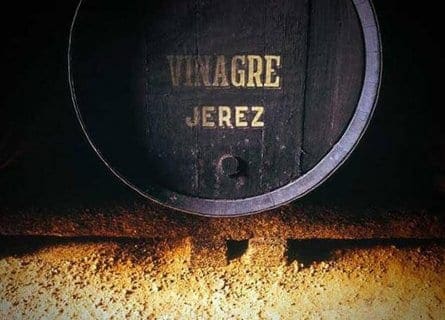
Savoring the Artistry: Exploring the World of Sherry Vinegar
May 8, 2017
Uncover the art of Sherry Vinegar production and experience its culinary delights. Discover the rich flavors and versatile uses in this comprehensive guide
By: Genevieve Mc Carthy / Last updated: April 9, 2024
Estimated reading time: 4 minutes
Spanish Paprika or pimentón is used in many dishes in Spanish cuisine: indeed, home-grown varieties of peppers or Capsicum are ubiquitous in Spanish tapas, appetizers, fish, and meat dishes. Just imagine the famed Spanish Chorizo (cured sausage) or patatas bravas, staples of the country’s great tapas bars, without Paprika! Yet, despite its importance, the origins of Paprika are simplicity itself- a ground spice produced from sun-dried peppers that are then consumed whole, crushed into flakes, or ground into the wonderful pimentón. The varieties of plants used to grow the peppers are only found in two Spanish regions, despite different species of pepper being grown across Eastern Europe and the Mediterranean. Pimentón is considered so important as a unique, high-quality product of Spain that it is protected by law – a D.O. (appellation of origin) regulates the varieties allowed, cultivation, harvesting, and production process.

Paprika is traditionally associated with Hungary and Hungarian cuisine, something of a misnomer as Paprika was used in central European and Asian cooking long before the Hungarians used this pungent spice to enhance their signature dish, Goulash. The varieties that grow in Spain were first introduced by Franciscan Monks, who had been sent to spread the virtues of Christianity in Spain’s colonies in the Americas. Returning Monks brought exotic new foodstuffs, including the seeds of various species of pepper grown in Murcia and Cáceres, to make pimentón. In their Monasteries along the Camino de Santiago, the important pilgrimage route of St James, the Monks planted the seeds in Northern Spain. Gradually, their use spread across Spain’s hotter regions, although it was not until the 19th century that they were milled to produce the intensely flavored pimentón.
The different varieties of Capsicum have grown in two demarcated areas: the Guadalentin Valley in Murcia and the Comarca de la Vera, or Valley of the Vera in Extremadura. The process used to make pimentón is controlled by the D.O. or appellation authorities, who closely watch the farmers in the region. The stipulated pepper varieties are left to ripen to an intensely bright red color. After sufficient ripeness has been achieved, the fruit must be harvested manually and not by machine. The peppers made into Paprika are sun-dried before being ground into a fine spice by modern machinery.

Although relatively uniform, this process produces different styles of pimentón according to the plant varieties from which it was milled. The sweet and mild (dulce) version is highly popular in Spain and used in various dishes. Next in line in the popularity stakes is the bittersweet (agridulce) pimentón, which is moderately spicy and great for adding some fire to Spanish stews and soups like Caldo Gallego. The fiery, hot (Picante) pimentón is used in many dishes in Galicia and Extremadura regions, where they use its potent aroma and flavor to lift simple ingredients like octopus and breadcrumbs.
Lastly, the Pimento de la Vera from the Caceres region has a wonderful, pungent, smoky flavor produced from its unique drying process. The peppers are hung next to tobacco leaves and left to dry under holm oak fires. A specialist pimentón is produced in small amounts under the meticulous care of growers who have worked in these lands for decades.
But, what is truly impressive about Spain’s paprika industry is the lack of rampant commercialism, sense of origin, and craftsmanship that the pimentóns – in all their various guises – display. While Hungary and even the Netherlands produce vast quantities of Paprika – often in industrial conditions – Spain’s pimentón heritage is strictly protected by law, and only the finest fruit is used to make the various styles. It is an essential feature of Spain’s gastronomic tradition and a highly prized item by everyone, from the humble bar owner to the nation’s Michelin-starred chefs!
If you would like us to customize an exclusive luxury tour, contact us and let us know your travel plans. We offer luxury food and wine tours for private groups of a minimum two guests. In addition, all of our private, chauffeured tours are available year-round upon request.

